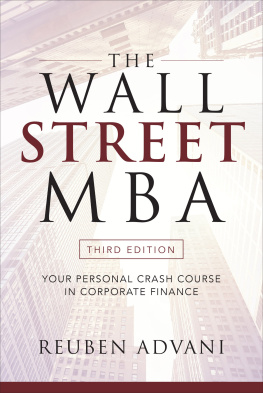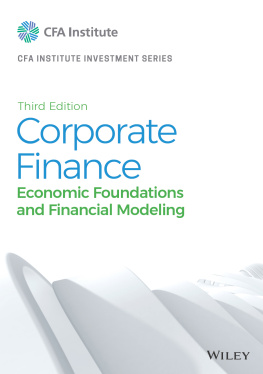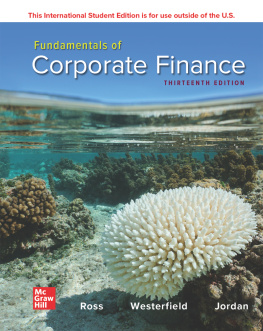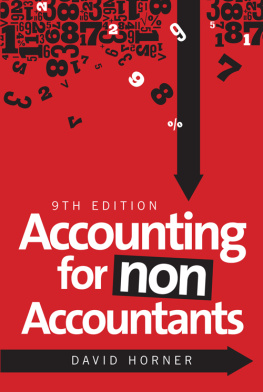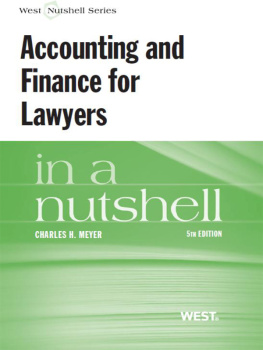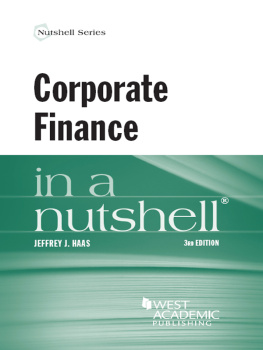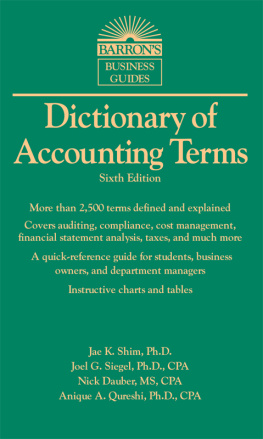Contents
Guide

Copyright 2018, 2012 by Reuben Advani. All rights reserved. Printed in the United States of America. Except as permitted under the United States Copyright Act of 1976, no part of this publication may be reproduced or distributed in any form or by any means, or stored in a database or retrieval system, without the prior written permission of the publisher.
1 2 3 4 5 6 7 8 9 QFR 23 22 21 20 19 18
ISBN 978-1-260-13559-6
MHID 1-260-13559-4
e-ISBN 978-1-260-13560-2
e-MHID 1-260-13560-8
This publication is designed to provide accurate and authoritative information in regard to the subject matter covered. It is sold with the understanding that neither the author nor the publisher is engaged in rendering legal, accounting, securities trading, or other professional service. If legal advice or other expert assistance is required, the services of a competent professional person should be sought.
From a Declaration of Principles Jointly Adopted by a Committee of the American Bar Association and a Committee of Publishers and Associations
Library of Congress Cataloging-in-Publication Data
Names: Advani, Reuben, author.
Title: The Wall Street MBA : your personal crash course in corporate finance / Reuben Advani.
Description: Third edition. | New York : McGraw-Hill, [2019] | Includes index.
Identifiers: LCCN 2018011193| ISBN 9781260135596 (alk. paper) | ISBN 1260135594
Subjects: LCSH: Business enterprises--Finance. | Corporations--Finance. | Accounting. | Wall Street (New York, N.Y.)--Anecdotes.
Classification: LCC HG4026 .A345 2019 | DDC 658.15--dc23 LC record available at https://lccn.loc.gov/2018011193
McGraw-Hill Education products are available at special quantity discounts to use as premiums and sales promotions or for use in corporate training programs. To contact a representative, please visit the Contact Us pages at www.mhprofessional.com.
To Emily, my favorite student and professor
CONTENTS
ACKNOWLEDGMENTS
A book like this cannot be written without the help of many people. I want to thank my mom, Dolly Advani, who has instilled in me the discipline and drive to take on any task, and my sister, Ramona Advani, who constantly offers her talents to those in need (which quite often is me). My deepest thanks to Ellis Rubinstein, TC Westcott, and Wendy Schneider who have taught me that financial efficiency can increase social impact. I want to thank Noah Schwartzberg at McGraw-Hill for his efforts to bring a third edition of this book to fruition and his immensely helpful suggestions. I owe a great deal of gratitude to Colin Kelley at McGraw-Hill, who originally helped turn my book idea into a reality.
Throughout my career, a number of individuals have offered me guidance, and I truly believe I would not be where I am today without their help. Robert Borghese and Fred Lipman have been tremendous mentors to me and are always willing to offer valuable advice whenever needed. I truly appreciate their help. I want to thank Rakesh Jain and Sajjad Jaffer, my brothers in finance and always great sources of advice. A special thanks is owed to my friends and walking compendiums of all business knowledge, Maziar Akram, Vineet Budhraja, and Vikram Sodhi. Two individuals helped me find my way to Wall Street many years ago, Adam and Richard Pechter, and I owe a very heartfelt thanks to them for helping start my career. I would like to extend an important thanks to Gary Podorowsky and Nick Henny, who helped me learn the corporate side of corporate finance.
I would also like to thank my friends Shom Chowdhury and Nimitt Mankad for their strong support of this book. Thanks is due to my friend Dr. Ravi Goel for showing me just how important finance is to even nonfinancial types. My deepest gratitude is offered to Tomer Rothschild and Matthew Zaklad for their global perspectives.
I also want to thank my friends Brian Buck, Mike Siegel, Oriol Sunyer, and Ignacio Delgado, who help keep me sane during hectic times. A special thanks is owed to Karen Czerniakowski, Chris Czerniakowski, Amanda Reichert, Nora and Estelle who keep me smiling and well fed. Finally, thank you to Emily, Leena, and Leila who provide me with constant support while keeping me on my toes.
INTRODUCTION
S ince the publication of this books first edition, much has happened in the world of global finance. Corporate scandals, overvalued mergers, a global financial crisis, a financial recovery, market volatility... and many more developments that can make your head spin! The ups and downs of the global markets create costs that are borne by the investor and consumer public. Misguidance by investment analysts, bankers, accountants, and corporate managers can compound problems and undermine our trust in the institutions that they serve. It has never been more important for each of us to have a basic understanding of corporate finance and corporate accounting. This book was inspired by the tumult created by the financial world.
But here is the bigger problem: finance and accounting are boring! I remember spending long hours in front of dry textbooks while trying to make sense of charts and graphs, let alone the esoteric vernacular. I have a confession to make: after two years at one of the top finance MBA programs, several years on Wall Street, and teaching positions at several respected universities, I still cant tell you what most of those words and symbols mean. And this is coming from someone who has made a good living exploiting those concepts. A lesson that I did learn, however, is that certain MBA themesif understood within the context of real-world business challengescan be extremely useful.
Several years ago, I thought to myself, why not put together a book that covers these concepts in a clear, succinct, user-friendly, and entertaining format? With this in mind, I have written this book, which is intended to offer a breakdown of the major concepts covered in a standard MBA finance and accounting program. My objective is to offer a user-friendly, interactive, and fun approach to facilitate understanding and learning. The book draws more on real-life examples and less on theory: it is part textbook, part storybook.
I have yet to find an accounting or finance course that is infused with any degree of passion. Likewise, I have yet to find a student of these studies who has achieved any level of inspiration through them. But who says we cant try? If you can grasp the concepts covered in this book, you will be able to navigate the world of corporate accounting and finance with a heightened sense of confidence. And, I hope, you will never again have to blindly accept the opinions of the so-called experts.
PART 1
ACCOUNTING
1
ACCOUNTING BASICS
Q: Whats the definition of an accountant?
A: Someone who solves a problem you didnt know you had in a way you dont understand.
N ormally, the mere mention of accounting is enough to send most people into deep REM sleep, and for good reason. Accounting is boring. But as with a lot of other boring things in life, we still do it. Driving to work and getting our teeth cleaned are boring, but we do them because we know that each serves as a means to an end. Similarly, we learn accounting to assist us in tackling a number of business and personal challenges. A clear understanding of accounting, along with the ability to apply the concepts, will lead to better decision making in our business activities. From picking stocks to calculating ones net worth, these concepts are useful. Plus, if we can apply them correctly to real-life vignettes and cases, they will be less boring, more fun, and easier to read and digest.


